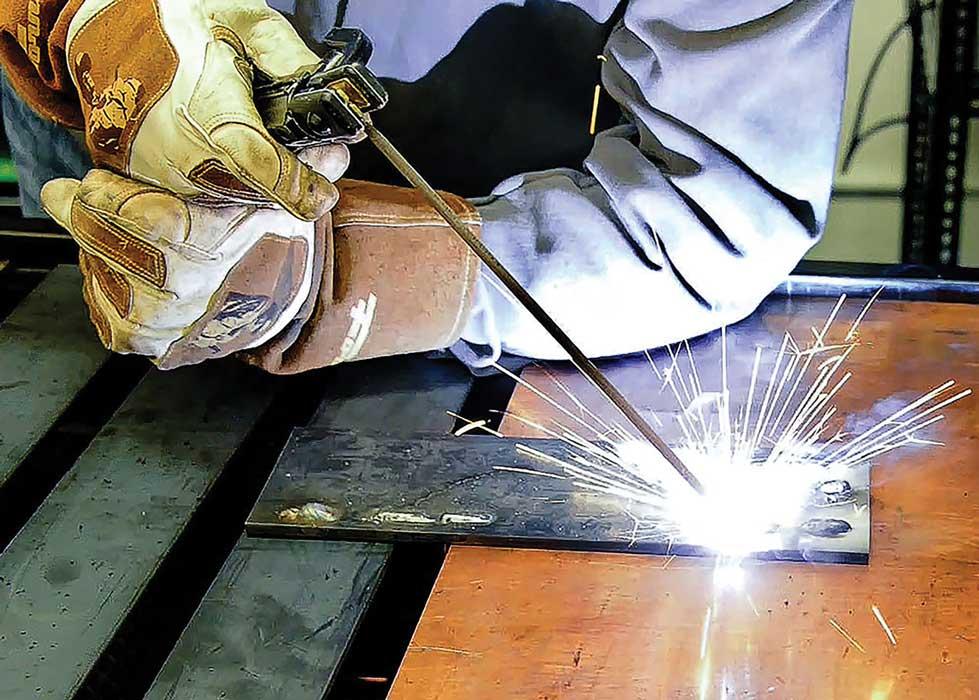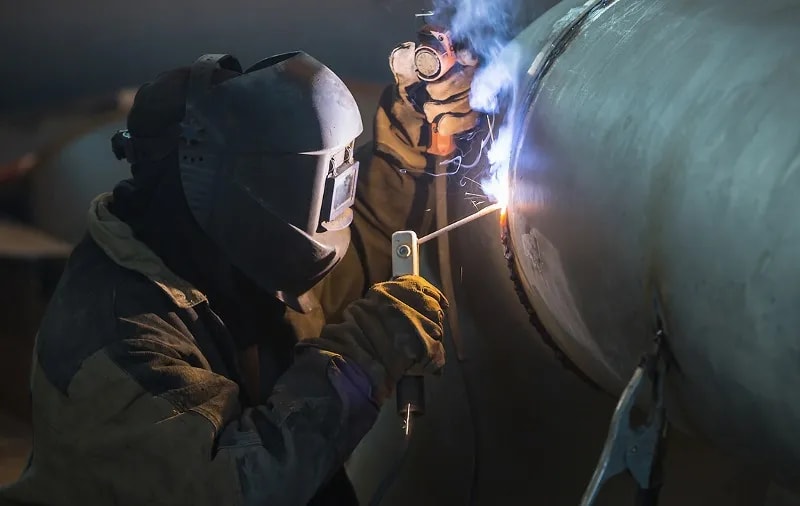Everything about Welding: Trick Insights Into Techniques and Finest Practices for Success
Welding includes a variety of techniques, each fit for certain materials and applications. Comprehending these approaches, such as GMAW, SMAW, and TIG, is crucial for attaining optimal outcomes. The right tools and safety and security practices can not be ignored. As prep work and repairing play critical duties in the welding process, understanding these aspects can considerably improve the quality of the last product. What are the key variables that assure an effective weld?
Understanding Different Welding Techniques
Welding methods encompass a range of methods, each matched to details applications and materials. Amongst one of the most typical strategies are Gas Steel Arc Welding (GMAW), Secured Metal Arc Welding (SMAW), and Tungsten Inert Gas Welding (TIG) GMAW, additionally called MIG welding, is prominent for its speed and adaptability, making it optimal for thin materials. SMAW, or stick welding, is favored for its simplicity and efficiency in outside settings, particularly with thicker steels. TIG welding uses accuracy and control, making it ideal for elaborate job and non-ferrous metals (Montana Mobile Welding and Repair Belgrade Welding). Each technique has its unique advantages and factors to consider, allowing welders to pick the very best technique based on the project's demands, material kind, and wanted end results. Understanding these strategies is essential for effective welding
Vital Welding Devices and Tools
While various welding strategies call for certain abilities, the right equipment and tools are similarly essential for attaining top quality outcomes. Essential welding devices consists of welding makers, which differ depending upon the technique-- such as MIG, TIG, or stick welding. Safety gear, including aprons, handwear covers, and helmets, assurances security and convenience throughout the procedure. Furthermore, components and clamps assist protect products in location, guaranteeing accuracy in welds. Consumables like welding rods, wire, and shielding gas are likewise important elements that influence the high quality of the weld. Furthermore, tools such as cutters and mills assist in surface preparation and post-weld ending up, adding to a professional result. Buying high-grade tools ultimately improves the effectiveness and performance of welding tasks.
Security Practices in Welding
Correct safety and security practices are essential in the welding sector to secure workers from potential threats. Welders need to wear appropriate individual protective equipment (PPE), consisting of helmets with correct shading, handwear covers, and flame-resistant clothing. Appropriate ventilation is important to lower exposure to hazardous fumes and gases generated throughout the welding procedure. In addition, workers need to be trained in the appropriate handling of welding tools to avoid mishaps. Fire precaution, such as keeping flammable products far from the welding area and having fire extinguishers readily offered, are essential. Regular assessments of equipment and offices can help determine possible threats prior to they bring about accidents. By sticking to these safety and security practices, welders can create a more secure working atmosphere and decrease threats associated with their trade.
Readying Products for Welding
Preparing materials for welding is an important step that substantially affects the top quality and honesty of the final item (Montana Mobile Welding and Repair Belgrade Fabrication). Proper prep work involves cleaning the surface areas to eliminate pollutants such as dirt, oil, and rust, which can compromise the weld. Techniques such as grinding, sanding, or using solvents are typically utilized to accomplish a clean surface. Additionally, ensuring that the products fit with each other snugly is crucial; voids can bring about weak welds. It's also essential to consider the positioning and positioning of the parts, as this will certainly affect the simplicity of welding and the final end result. Finally, choosing the suitable filler material and guaranteeing compatibility with the base metals is essential for achieving solid, long lasting welds
Tips for Achieving High-Quality Welds
Attaining premium welds calls for attention to information and adherence to best methods throughout the welding procedure. Proper joint preparation is crucial, guaranteeing surface areas are tidy and totally free from impurities. Selecting the suitable filler product and welding strategy based on the base steels is important for perfect bonding. Keeping constant traveling rate and angle while welding can advertise and avoid defects uniformity. Furthermore, managing warm input is crucial; excessive heat can lead to warping and compromised joints. If essential, routinely examining the welds during the procedure permits for instant modifications. Using appropriate post-weld therapies, such as cleansing and stress alleviation, can boost the toughness and integrity of the weld, ultimately ensuring an effective outcome.
Troubleshooting Usual Welding Issues
Welding commonly provides obstacles that can influence the high quality and stability of the end product. Typical issues such as porosity, inconsistent weld grains, and overheating can occur, each calling for particular fixing methods. Understanding these troubles is essential for welders to improve their abilities and achieve suitable outcomes.
Porosity Problems Explained
Porosity aluminum welding can often be brazing welding overlooked, it continues to be an essential concern in welding that can endanger the integrity of an ended up item. Porosity refers to the existence of tiny gas pockets within the weld bead, which can lead and damage the joint to premature failing. This issue generally emerges from pollutants, dampness, or improper protecting gas insurance coverage during the welding procedure. To reduce porosity, welders need to verify that the base products are completely dry and tidy, make use of appropriate protecting gases, and maintain constant welding criteria. Consistently evaluating the equipment and environment can additionally help determine prospective issues before they materialize in the weld. Addressing porosity properly is important for accomplishing strong, resilient welds that fulfill top quality criteria.

Irregular Weld Beads
Irregular weld beads can substantially impact the high quality and stamina of an ended up item. Various variables add to this problem, including inappropriate traveling rate, wrong amperage settings, and irregular electrode angles. When the welder moves as well quickly, a grain may show up narrow and lack infiltration, while moving also slowly can create too much buildup. In addition, utilizing the incorrect amperage can lead to either undercutting or extreme spatter, both of which compromise weld stability. The welder's strategy, such as inconsistent lantern movement, can likewise lead to irregular bead appearance. To mitigate these troubles, welders need to matheson welding focus on maintaining consistent, controlled activities and guaranteeing correct equipment setups to achieve uniformity in their welds. Consistency is vital to accomplishing solid and reputable welds.
Getting Too Hot and Warping Issues
Excessive warmth during the welding process can bring about significant overheating and contorting issues, impacting the architectural integrity of the work surface. These issues commonly manifest as distortion, which can jeopardize placement and fit-up, making more assembly testing. Elements adding to overheating consist of the selection of welding parameters, such as voltage and take a trip speed, in addition to the kind of material being bonded. To minimize these concerns, welders should maintain consistent travel speed and appropriate warm input while checking the work surface temperature level. In addition, pre-heating or post-weld warmth treatment can aid alleviate tensions triggered by fast cooling - Montana Mobile Welding and Repair Welding. Routine assessment and adherence to finest methods are vital in stopping getting too hot and making sure the durability and reliability of welded frameworks
Often Asked Concerns
What Are the Profession Opportunities in the Welding Industry?
The welding sector uses varied profession opportunities, consisting of settings as welders, instructors, examiners, and designers. Experts can work in manufacturing, building and construction, aerospace, and automotive sectors, gaining from strong need and competitive wages in different roles.
Exactly How Can I Improve My Welding Rate Without Sacrificing High Quality?
To improve welding rate without sacrificing high quality, one should exercise efficient methods, preserve equipment, enhance setups, and enhance hand-eye control. Regular training and seeking responses can likewise greatly add to attaining quicker, top quality welds.
What Qualifications Are Readily Available for Welders?
Numerous qualifications exist for welders, consisting of those from the American Welding Society (AWS), the National Facility for Construction Education and Research Study (NCCER), and numerous industry-specific companies. These credentials boost employability and show skill proficiency.
How Does Welding Affect the Qualities of Metals?
Welding influences the properties of metals by changing their microstructure, which can bring about modifications in ductility, firmness, and stamina. Warmth input and air conditioning prices throughout the process significantly impact these product characteristics.
Can I Weld Dissimilar Metals Together?
